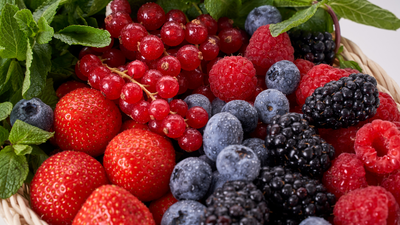THC and Breast Milk: Is it Dangerous?
By Jordan Berns
In the 2020 elections, 15 states legalized marijuana with 33 states allowing for the sale of medical marijuana. As of 2020, 93 million Americans live in cannabis-friendly states. While marijuana may be legal at the state level, federally it’s considered a Schedule 1 substance, putting it in the same category as heroin. Though first cultivated 12,000 years ago, cannabis is becoming more popular than ever: Marijuana is currently the number one drug used by pregnant and breastfeeding women.
One of the main concerns about breastfeeding mothers using cannabis is the ability of its chemical components, like THC (delta-9-tetrahydrocannabinol), to be absorbed by breast milk and consumed by a nursing baby. THC causes the mood altering “high” that is often associated with marijuana. Studies have definitively proven that cannabis use while pregnant is harmful and causes increased rates of depression, delinquency, and attention disorders in children and young adults. Yet, there is still much that is unknown about the interaction between breastfeeding and THC. This leads to the question:
What are the effects of THC on breast milk?
THC is a fat-soluble chemical compound. This means that THC is absorbed quickly and moved through the blood to be deposited in fatty tissues and metabolized in the liver. Fat-soluble chemical compounds are more potentially harmful than their water-soluble counterparts, as they can accumulate to toxic levels and may be stored long after the body needs them. The average woman is about 25 to 30% body fat, leaving many deposit sites for THC. Similarly, breast milk itself has a high fat content. Mature breast milk consists of 3 to 5% fat, which makes it extra susceptible to the presence of fat soluble chemical compounds like THC.
The main thing to consider when discussing the toxicity of a drug like THC is its half-life (the time it takes for a chemical’s presence to decrease by 50%). However, there is some conflicting data on THC’s half-life because of the unpredictable length of time that THC is stored and released by the body. It has been reported that THC’s half-life ranges from 20 to 36 hours when used occasionally, but is four to five days long for more dependent participants. A 2018 study stated THC’s half-life is even longer, estimating that it has a half-life of 20 days. Researchers believe it can take up to anywhere from six days to six weeks for THC to be completely flushed out of a person’s system.
So, how much of a mother’s THC intake is absorbed through her breast milk? Well, it’s hard to know exactly. A study published in 1982 reported that babies consume 0.8% of their mothers’ dose/kg with regular users, while women who consumed large quantities of cannabis saw an 8:1 ratio transferred into their breast milk. It’s now understood that THC almost always accumulates in breast milk when taken by the mother, but scientists don’t have precise numbers on what percentage of THC enters breast milk or what level of this chemical is damaging to nursing babies.
How much is too much? THC absorbs into breast milk.
When measuring the potency of THC in breast milk, there appears to be a direct relation to the amount and frequency of a mother’s marijuana use. In a 2020 study, 50 women used cannabis for two weeks before donating breast milk samples; 66% of these specimens had measurable amounts of THC. All of these women’s babies were evaluated as healthy and all met the standard development milestones. In 2018, scientists from the University of California, San Diego found that 63% of breast milk specimens had THC present when lactating women smoked cannabis for two weeks prior to the experiment. Of these samples, the median amount of THC was 9.47 mcg/L. Additionally, five specimens had levels of cannabidiol (a non-psychoactive phytocannabinoid called CBD) and five had 11-OH-THC (the main active component in THC). An additional study in 2018 also happened upon similar findings. This research revealed that in cannabis users’ breast milk, the most potent chemical strain was THC.
A study published on November 15, 2016 in Forensic Toxicology yielded groundbreaking results. Researchers measured the amount of THC in both breast milk and plasma from mothers who smoked marijuana. The concentration of THC in the mothers’ breast milk was eight times higher than that of their plasma levels, indicating that more THC is captured and stored in breast milk than anywhere else in the body. Further analysis of stool samples from those mothers’ babies showed a higher level of THC in the fecal matter than was originally in the breast milk. This suggests that the babies were metabolizing the cannabis themselves after drinking the THC-laced breast milk.
Healthcare professionals are concerned about the effects of THC on infant brain development, specifically neurotransmitters and the development of the nervous system. There are also questions as to THC’s impact on a baby’s endocannabinoid system, which controls the function of memory, metabolism, immune responses, appetite, and intercellular communication, and more.
A 1990 study from the University of Washington reported that daily cannabis usage could hamper a baby’s motor development, but perhaps not affect intellectual or physical growth. 68 babies whose mothers smoked marijuana while breastfeeding were compared to 68 babies whose mothers had abstained from the drug. The more joints the mother had smoked, the worse the infants’ motor delays were. The impact was especially severe if the mother smoked more than 15 days during their first lactating month.
A 2001 study from the University of California, San Diego hypothesized a link between SIDS (Sudden Infant Death Syndrome) and marijuana use while breastfeeding, but this research is not considered detailed enough to be substantially backed by the medical community. In 1991, a Canadian experiment revealed that babies who consumed significant amounts of cannabis through breast milk were more lethargic and nursed for fewer, shorter periods of time. This may account for the decreased motor development, but additional studies need to be conducted for conclusive proof. Additionally, there has been a proven relationship between time spent breastfeeding and marijuana use, as studied in Colorado. 79% of sober women were still breastfeeding after nine weeks or more postpartum, while only 58% of breastfeeding women who used cannabis nursed for a similar amount of time. Since all the studies on infant development with THC have been short-term, the consequences of THC on long-term development have yet to be discovered.
Experiments on THC’s effects on breast milk are difficult to conduct. Besides the ethical quandary, most of the data is gathered through self-reporting, which can sometimes be inaccurate or misleading. One of the roadblocks to acquiring reliable data is partly from the mix of potential contaminants in a person’s system in addition to THC. Those who rely heavily on marijuana are statistically more likely to partake in tobacco, alcohol, and other illicit drugs. Another obstacle is that researchers have yet to successfully differentiate between the rates of breastfeeding women suffering from malnutrition due to economic factors and those who have poor health from cannabis use. This can also be a challenging field of study because recreational cannabis is still illegal in most states. Even in places where it is legal, one of the issues with experiments on the potential dangers of THC and breast milk is that marijuana is fairly unregulated. In the United States, the Food and Drug Administration (FDA) does not have many approved cannabis related products.
34 to 60% of female cannabis users continue to use through pregnancy and breastfeeding because they believe marijuana to be safer than tobacco or prescription medications. However, most physicians recommend that even though marijuana is a natural substance, it can still present a threat. In fact, a 2007 study from Ottawa, Canada published that smoke from medical marijuana can contain ammonia, hydrogen cyanide, and nitrogen oxide at much higher levels than found in cigarettes. There’s a concern that cannabis products could be contaminated with fungus, bacteria, pesticides, and heavy metals that may go unchecked due to a lack of government oversight. Despite not obtaining enough supporting evidence, a 2018 study revealed that 69% of Colorado dispensaries market marijuana to pregnant women as a cure to morning sickness, with 36% of these businesses promising women that cannabis products are safe to take while pregnant.
Partly because the absence of oversight, the chemical composition of marijuana products may also be in a state of flux contingent on consumer demands. In 2015, at the 249th National Meeting & Exposition of the American Chemical Society (ACS), a cannabis testing site in Colorado announced that THC potency in cannabis products has jumped to nearly 30% per sample as a result from cross-breeding marijuana plants. 30 years ago, THC levels hovered significantly below 10%. While THC levels have been on the rise, amounts of CBD, that many believe to have a therapeutic effect on everything from cancer to schizophrenia to Huntington’s disease, has been decreasing over time. This rise in THC levels in marijuana will likely translate to increased amounts of THC absorbed by breast milk.
Although there is not sufficient data to draw conclusive proof, many medical associations recommend abstaining from cannabis products while breastfeeding. The American Academy of Pediatrics advises weaning, if possible, before starting marijuana use. In October of 2017, the American College of Obstetricians and Gynecologists released a statement that officially recommended against using marijuana during lactation. The Centers for Disease Control and Prevention (CDC) has published that while there’s not enough evidence to draw a definitive conclusion, they recommend avoiding marijuana while breastfeeding. If it’s not feasible to completely terminate cannabis use, the CDC advises mothers to drastically cut down the amount and frequency of their intake.
It’s critical to remember that secondhand smoke is always dangerous to children, including that of cannabis. Additionally, changing the method in which THC is consumed (edible products, smoke, vaping) has no effect on breast milk contamination; THC leaks equally into breast milk no matter what form it takes. The practice of “pump and dump” doesn’t work for marijuana products as cannabis is stored in fat and isn’t released at even, predictable rates.
Even though cannabis can have therapeutic qualities for adults, it could be fatal if ingested by infants, so make sure to store all marijuana products in child-resistant containers away from your little ones. Call Poison Control (1-800-222-1222) or 9-1-1 immediately if your child consumes any marijuana. Scientists around the world continue experimenting to gather more information on the short and long-term ramifications of cannabis use while breastfeeding. By 2027, analysts believe the legal marijuana industry will be worth almost $91 billion dollars. Marijuana is here to stay, and the best thing mothers can do is talk with their doctors while researching this complex topic to make a treatment and breastfeeding plan tailored to every individual.







Great post! , The use of THC-containing products during breastfeeding is a topic of concern due to the potential transfer of THC to breast milk and its possible impact on infant development. It’s recommended to avoid cannabis use while breastfeeding to ensure the health and well-being of the infant. If you have questions or concerns about cannabis use and breastfeeding, it’s advisable to consult with a healthcare professional who is knowledgeable about both cannabis and lactation.
Do you have plans to sell an in home THC breastmilk test? Something similar has been around for alcohol for years.